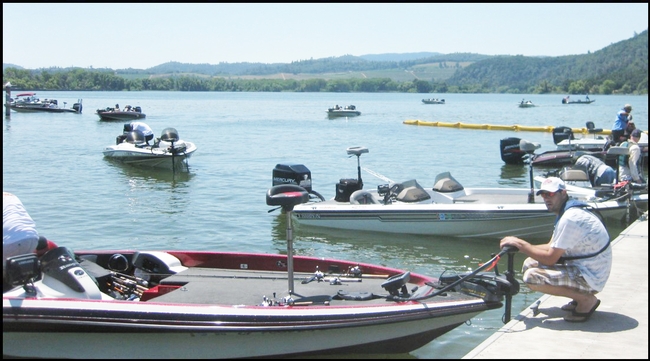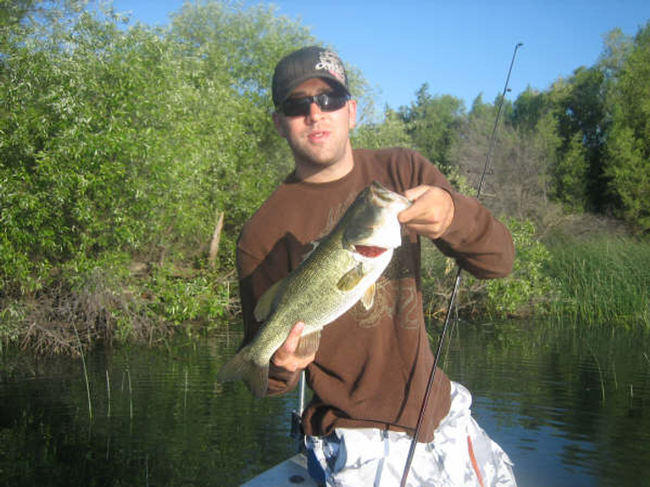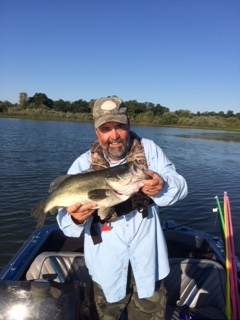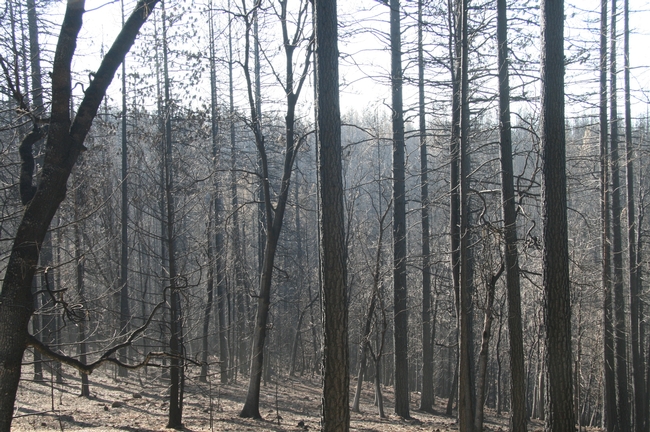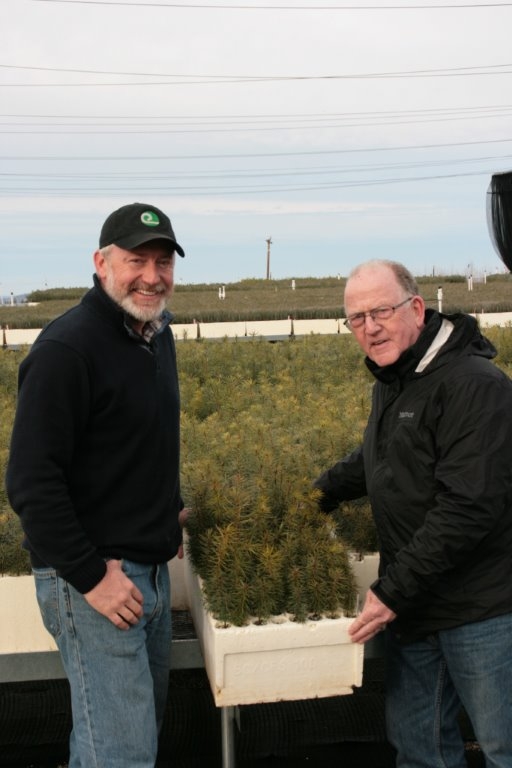Posts Tagged: Lake County
Communities reel in revenue from sport fishing
In August, the Clayton Fire burned nearly 4,000 acres and 198 homes and businesses in Lake County. In 2015, the Valley, Rocky and Jerusalem fires together burned 170,623 acres and destroyed 2,078 structures. But the devastating Lake County wildfires haven't put a damper on fishing at Clear Lake, which reels in roughly $1 million to the community annually, according to a report from UC Cooperative Extension.
“The lake's economic attraction has not been negatively impacted by the fires,” said Greg Giusti, UC Cooperative Extension advisor in Lake County and author of the study. “The fish are fine and the anglers keep coming.”
Giusti's report outlines the economic value of fishing on Clear Lake, highlighting the importance of the outdoor pastime to the local economy.
Bass, crappie, catfish and bluegill thrive in Clear Lake's warm water, with its rich plant life and abundant food supply.
“People come from all over the country to fish Clear Lake,” said Giusti, who studies fisheries and freshwater ecology.
Teeming with fish, Clear Lake's reputation attracts serious anglers. Bass Master Magazine (July/August 2016) rated Clear Lake third out of the top 100 bass fishing lakes in the country and first among the nine western states.
More data need to estimate true economic value of fishing
Based on a conservative estimate of the number of anglers and multiplying by $58.16, (the U.S. Fish and Wildlife Service's estimate of an angler's average daily fishing-related expenditure), Giusti concluded Clear Lake fishing is a $1 million enterprise. He considers the true value of fishing on Clear Lake to be much higher because limited data was available to understand the full economic value.
To estimate the number of anglers, Giusti doubled the number of quagga mussel stickers sold and added the number of people registered for Clear Lake fishing tournaments. Before entering the lake, boats must pass the county's monthly quagga mussel inspection for the invasive species and receive the sticker. Giusti assumed an average of two anglers per boat, for a total of 10,156 spending $590,673 annually. Since 6,498 Lake County residents have fishing licenses, he estimated that they spend at least $377,923.68 on fishing annually.
He thinks local businesses can capitalize on fishing to bring even more revenue into the community by enticing anglers and their families to engage in other activities during their visit.
“Because access to the lake is open and free, we don't know how often anglers return to Clear Lake and for how long they stay,” Giusti said. “While they're here, folks are spending money on food, gas, tackle and maybe lodging. If they bring their families, Dad may be fishing while Mom and the kids might be at the movies.”
California Department of Fish and Wildlife collects about $57 million in fishing license sales each year. Giusti found that more than 150,000 licenses were sold in 2014 to anglers in Lake County and neighboring Mendocino, Sonoma, Colusa and Sacramento counties, which are close enough to make a day trip to Clear Lake.
Although local businesses typically gear up for summer tourists, Giusti sees marketing opportunities around fishing during the spring and fall, as the primary angling months occur before and after summer.
“Right now all the focus is on summer tourism and wine, while the most active visitor months are not recognized,” Giusti said. “Spring months are the most popular boating months. Businesses should be hanging banners downtown, putting posters in the windows welcoming anglers with specials for meals, promotional events highlighting fishing, and even sponsored fishing tournaments.”
Other California communities could also benefit by capitalizing on fishing, in Giusti's opinion.
“Freshwater fishing in California represents a $1.4 billion industry, generating 22,000 jobs and providing more than $920 million in salaries and wages,” said Giusti. “California ranks fifth in the nation based on the value of fishing economics.”
The American Sportfishing Association estimates that more than 33 million people enjoy fishing in America, and spend an average of $1,441 per year on fishing.
To download the full report, “Understanding the economic value of angling on Clear Lake – A profile of a famous lake,” visit http://ucanr.edu/sites/ClearLakeAquaticWebsite.
Lake County plants 100,000 seeds to reforest area destroyed by Valley Fire
Lake County community groups have raised nearly $60,000 to reforest the areas ravaged by last September's Valley Fire. The funds have allowed the greenhouse planting of 100,000 native conifer seedlings that will be ready for distribution in time for the winter 2016 planting season. The Valley Fire, which started in Cobb on Sept. 12, burned more than 76,000 acres.
In October, Greg Giusti, UC ANR Cooperative Extension director and forestry advisor in Lake County, and Korinn Woodard, district conservationist with the Natural Resources Conservation District (NRCS), began to estimate the numbers of seeds needed for the first year of planting.
Two local entities have provided funds to jumpstart the much-needed reforestation in the areas affected by fire. #LakeCountyRising is a collaborative fundraising effort of the Lake County Winegrape Commission, Lake County Winery Association and Lake County Wine Alliance. The Lake Area Rotary Club Association (LARCA) is a nonprofit foundation that comprises the four Rotary Clubs in Lake County – Lakeport, Middletown, Clearlake and Kelseyville. Together they have allocated the nearly $60,000 to the East Lake Resource Conservation District (RCD) to get the seedlings planted and the program in place.
By collaborating with the El Dorado/Georgetown Divide RCD's established native-plant seed collection and propagation program, the funds have resulted in the greenhouse planting of 100,000 native conifers – mostly ponderosa pine, but also some Douglas fir and sugar pine. The species available are suitable for higher elevation burned areas such as Cobb Mountain.
“Getting our forest lands replanted as soon as possible is a cornerstone in the healing process of the spirit of these communities,” said Andy Peterson, chair of the LARCA Fire Relief Committee. “The LARCA Fire Relief Committee identified that as a top priority from day one and we are extremely pleased to be partnering with these other agencies to get that done.”
#LakeCountyRising representatives were interested in helping to support the effort, but any donation would need to go to an established organization responsible for the program. At the same time, LARCA had also identified funding for reforestation efforts as a major priority.
“An experienced agency was needed to lead this effort, and our board agreed that we had the experience and resources to make it happen, if funds were available,” said Charlotte Griswold, East Lake RCD president.
This is where #LakeCountyRising and LARCA stepped up to the plate. Timing was of the essence, as seeds would need to be purchased in time for winter planting in order to have seedling stock available by late 2016.
“It was evident there was urgency, so we presented it to our steering committee and they wholeheartedly supported it,” said Debra Sommerfield, president of the Lake County Winegrape Commission, one of the three organizations involved in the #LakeCountyRising fundraising effort.
“The intention is to make conifer seedlings available for planting each winter for the next few years at a pace that will align with the community rebuilding process and demand,” Griswold said. “We expect to work with NRCS to start taking advance orders before the end of April and to partner with the ag and natural resources programs at area high schools to organize several community planting projects.”
UC helps community develop local food systems
The movement in Lake County to encourage local citizens to consume locally produced agricultural products got a boost last month when a diversity of experts brought in ideas that have worked elsewhere in the state, according to a story in Lake County News.
Food systems analyst Gail Feenstra of the UC Sustainable Agriculture Research and Education Program explained how schools in Davis, Calif., increased students' fruit and vegetable consumption by tying the salad bar selections to school garden lessons.
To help fund the program, the coordinators turned food scraps into compost for the gardens. By reducing the amount of garbage, they saved the district $60,000 – enough to fund their positions and subsidize the gardens.
City of Davis voters also passed a parcel tax to help subsidize the program, finding it worthwhile to ensure all students were served nutritious lunches made from locally grown foods, the article said.
Shermain Hardesty, extension specialist for agricultural and resource economics at UC Davis, presented information at the gathering on establishing local food systems.
"Building things from scratch, by yourself, costs money. Look for partnerships using existing resources," Hardesty was quoted in the article.
She led an interactive exercise asking participants what was missing in Lake County's local food system, with grains, meat and dairy the most often mentioned. The group then discussed what infrastructure was needed to create local industries that would meet these needs.
Other projects supporting local agriculture addressed at the workshop were:
- The Lake County Community Co-Op, an online distribution system that enables members to order certified organic products directly from local producers
- “Lake County Grown,” sponsored by Lake County Farm Bureau, for online ordering of local produce
- The LAVA Center, which buys overages and blemished produce from farmers and adds value by turning it into another product, such as sauces or chutneys.

